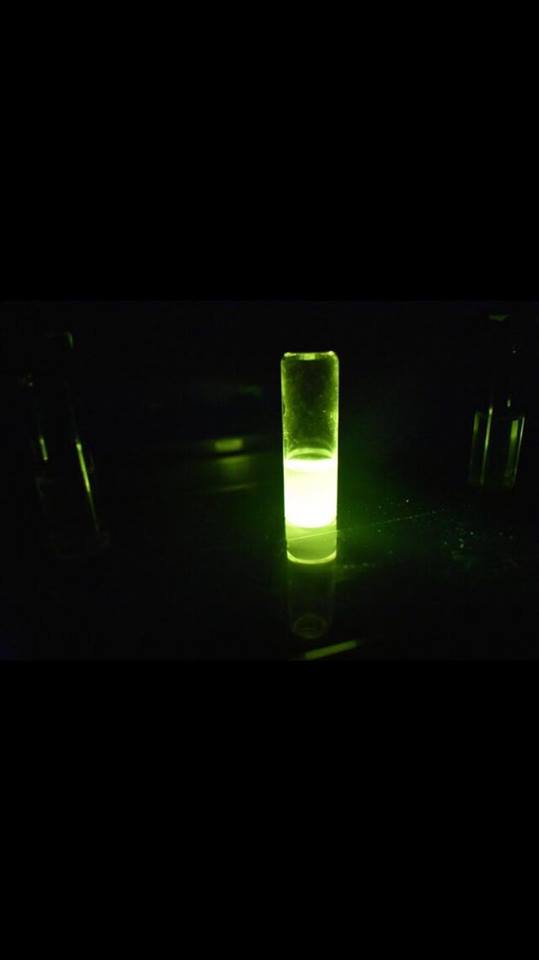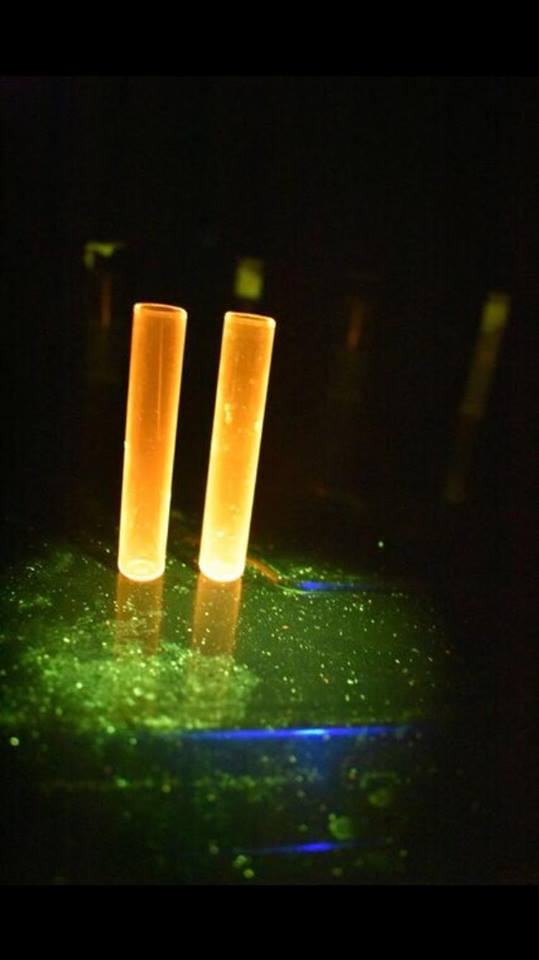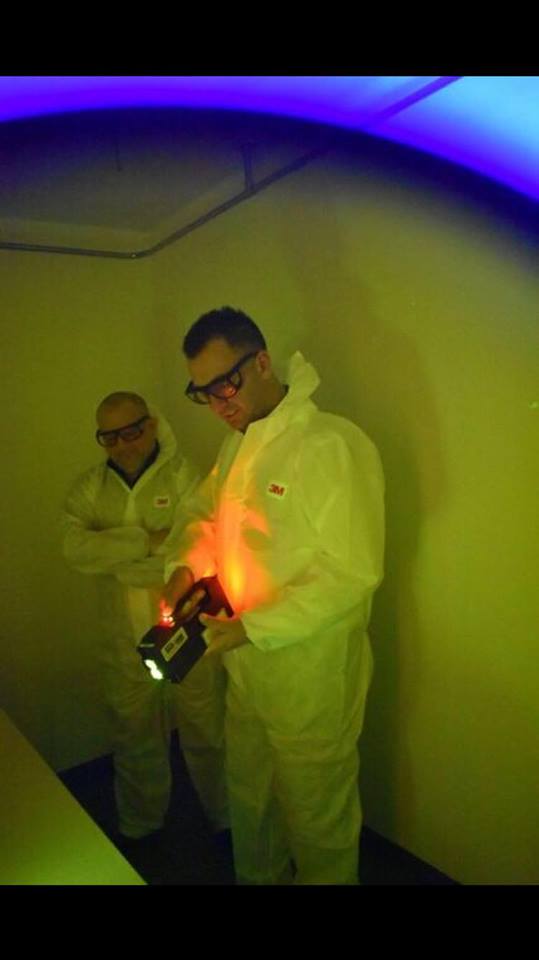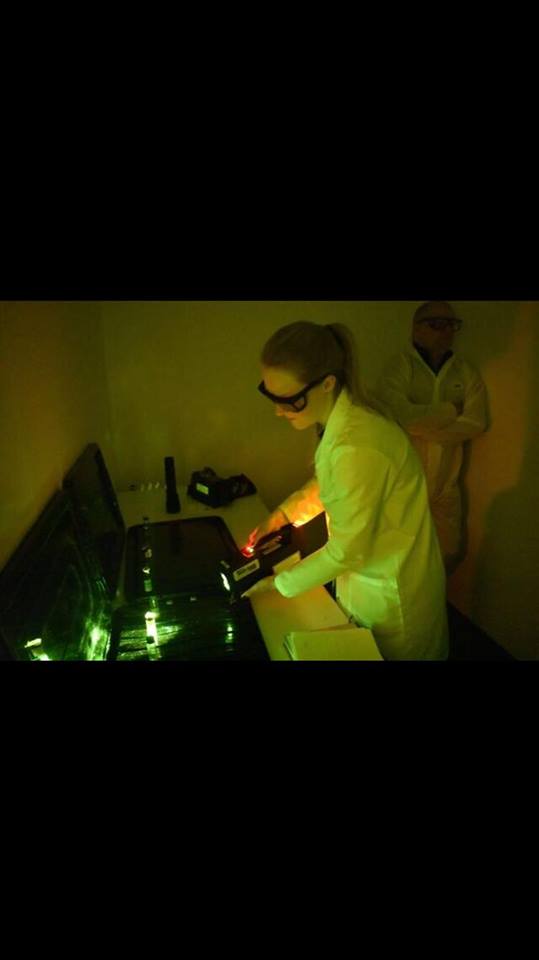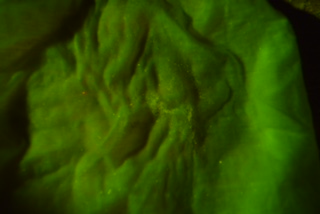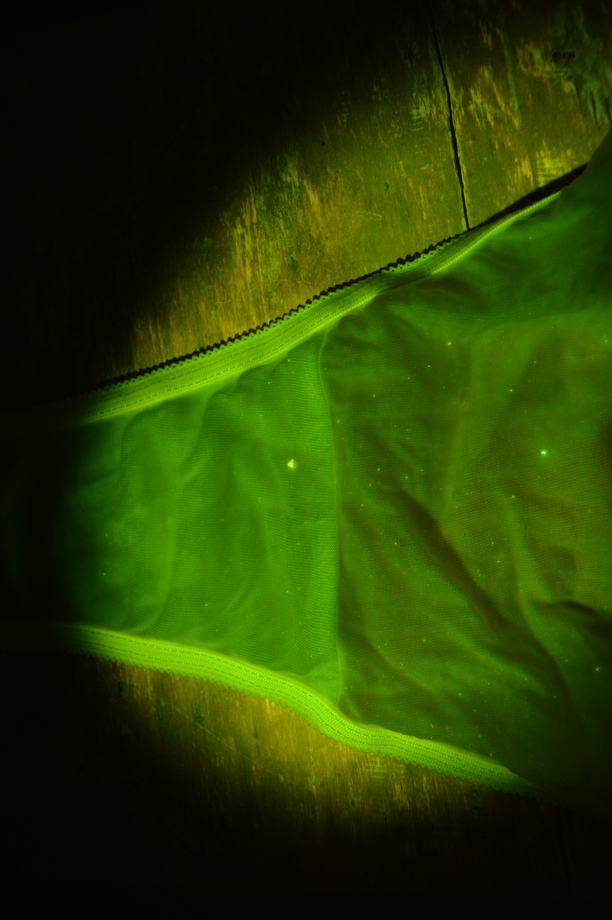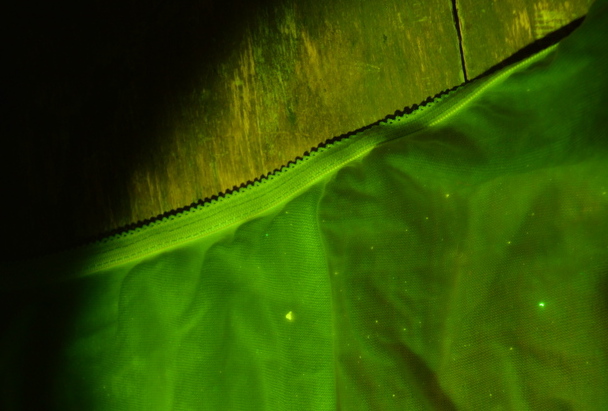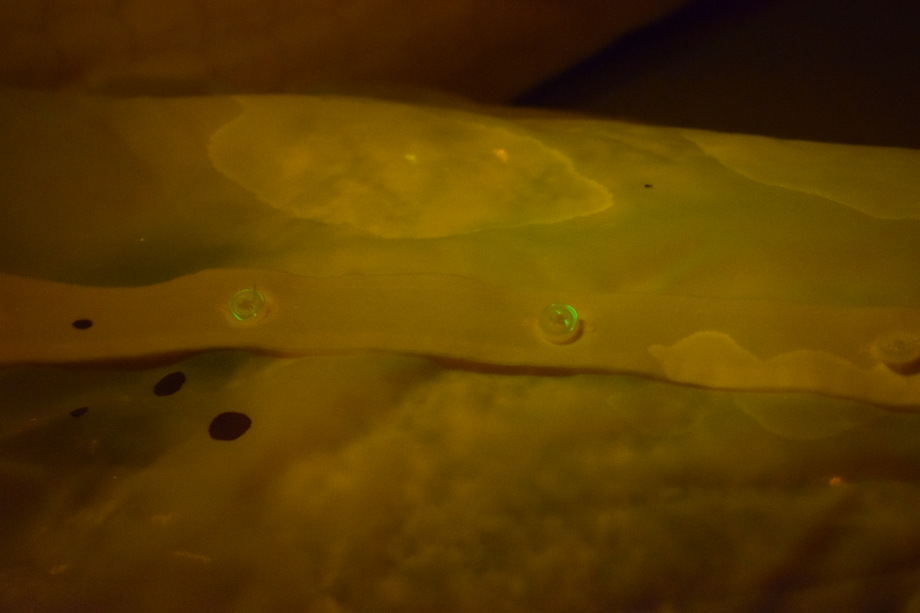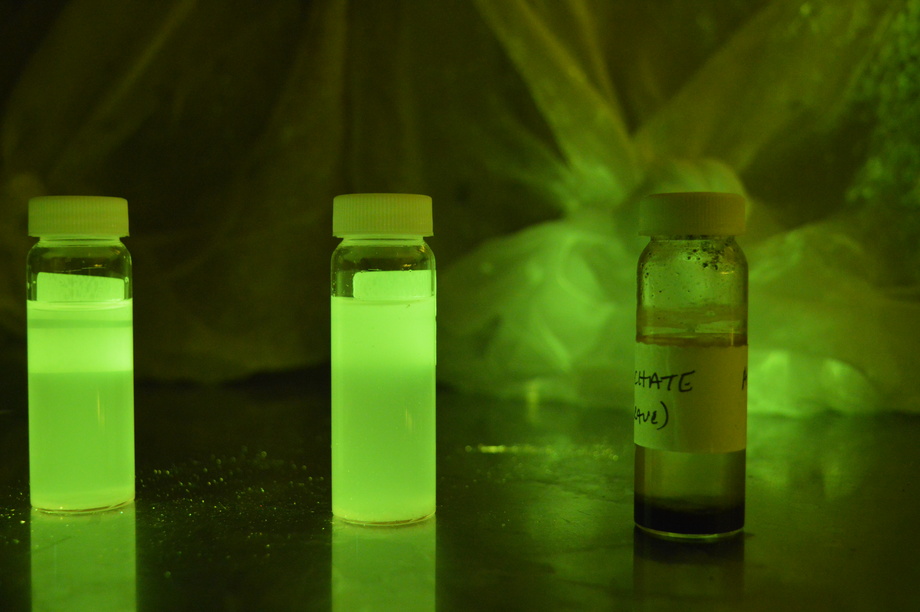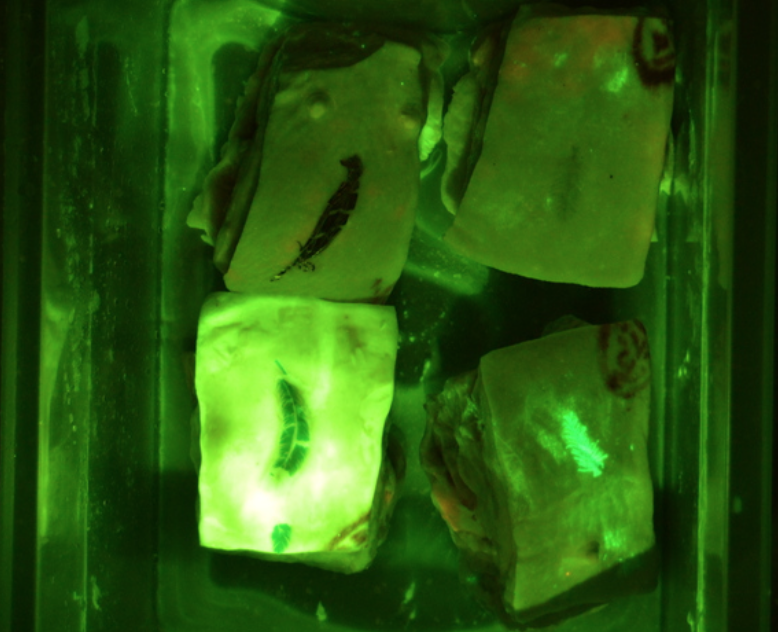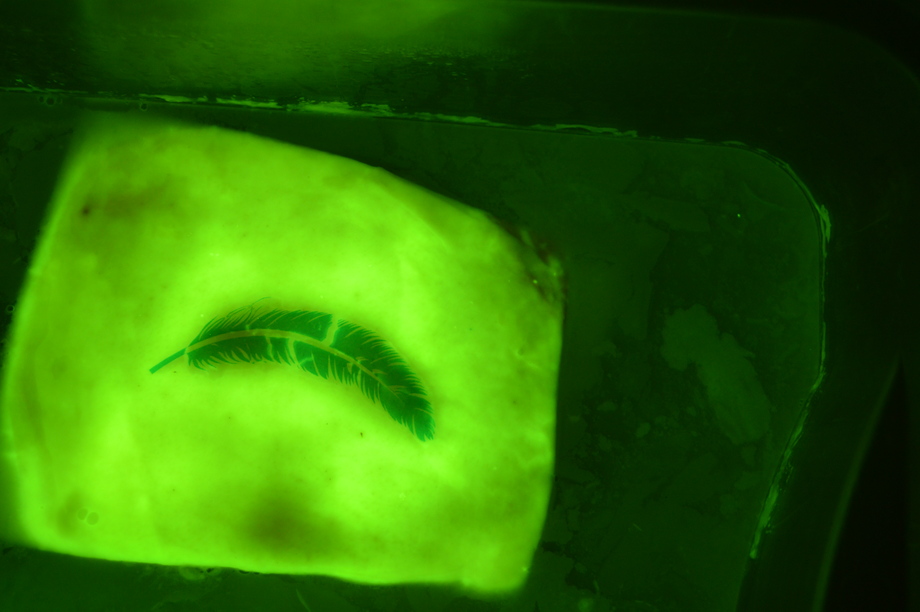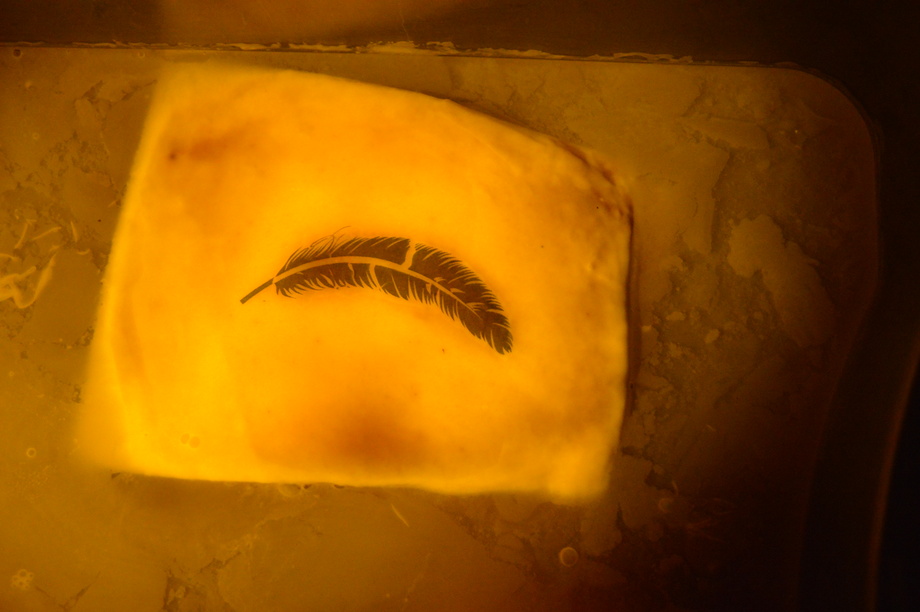Information relating to decomposition of human remains in an aqueous environment is limited. This restricts time effective search and recovery operations by the Police. This experiment aimed to investigate whether unfiltered water and filtered water would affect the detection of fluorescence created by a decomposing body and the point in time when the body would no longer produce any chemical moieties that cause the fluorescence. To understand the effect of such water conditions, 20ml of water samples was collected from a local nature reserve at Staffordshire University (GPS. 53.005787, -2.173315). 10ml of this sample was filtered to remove microorganisms because they may have some effect upon the fluorescence or they may fluoresce themselves the remaining 10ml was kept in its unaltered condition. Mice which were used as human proxies, were submerged for each water condition and incubated to 20 degrees Celsius over a period of 10 weeks. Samples were collected weekly the fluorescence intensity measured and the level of decomposition using a Body Aquatic Decompositional Score (BADS). Fluorimetry was used to identify the total peak area of fluorescence for each sample. A scatter graph identified that each sample varied significantly from each other, highlighting that there was no significant trend between the total peak area and the length of time in ADD’s. Further work regarding a Class 4 Laser and a LED Diode Forensic Lighting System will determine whether fluorimetry is a visually effective technique to aid underwater searches for missing persons.
Case Study 6 - Detection of human remains from underwater conditions
Linking closer to the laser work, I have been running my samples on the fluorimeter at three wavelengths (405nm, 445nm and 532nm) so I can link the results to the laser.
Case Study 5 - SARCS-LED
The SARCS-LED (Sexual Assault Rapid Crime Scene-LED) was used to conduct an examination of a SARC’s (Sexual Assault Referral Clinic) medical suite. The results in the attached pictures showcase the power and clarity of the SARCS-LED light source. The SARCS-LED operates at peak -5nm to + 5nm of 450nm, with divergence of 440nm – 470nm, and is supported by 3.8 W of power. The light clarity and power of the SARCS-LED is not currently available in other LED light source options.
Tech-Long Industry developed the SARCS-LED in collaboration with UK Law Enforcement.
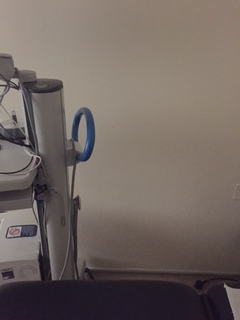
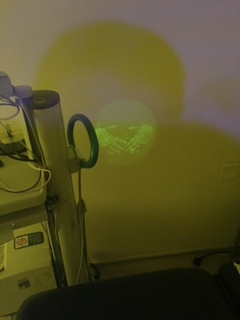
Case Study 4 - TBL-Mini Laser
The below images of human teeth were taken by Professor John Cassella (Staffordshire University) in the trauma facility. The light source used was the TBL Mini laser, a triple wavelength class 4 laser, with the 445nm illuminated.
Here human teeth are fluorescing using the TBL-Mini laser at 445nm wavelength, when compared to ambient lighting in the second image, which is not fluorescing.
Case Study 2 - DB-LED
Professor Cassella at Staffordshire Universities Crime Scene House took the below images. The DB-LED is the light source being used, with 530nm wavelength illuminated.
The first image demonstrates the presence of human semen on white cotton pants. The second image demonstrates the presence of semen on a white cotton shirt, the higher contrast dark stain is human blood. Only blood was visible to the human eye without the support of a light source.
Case Study 1 - TBL-Mini Laser
An examination of fluorescence emitted from temporary tattoos placed on pig skin. The aim of this research was to determine if an unknown body at post mortem could be identified from the tattoos even after 3 weeks of decomposition.
The various wavelengths of Tech-Long laser light were able to assist in enhancing the temporary tattoos. Some of the chemicals released into the water as part of the decomposition process of the pig skin made the water fluoresce as can be seen in the bottled samples; this offers interesting opportunities to look for bodies in lakes and rivers etc. if they indeed fluoresce.
Decomposition of Pork Flesh with Tattoo Study
Professor John P. Cassella
Department of Criminal Justice and Forensics
School of Law, Policing and Forensics
Science Centre, Staffordshire University

